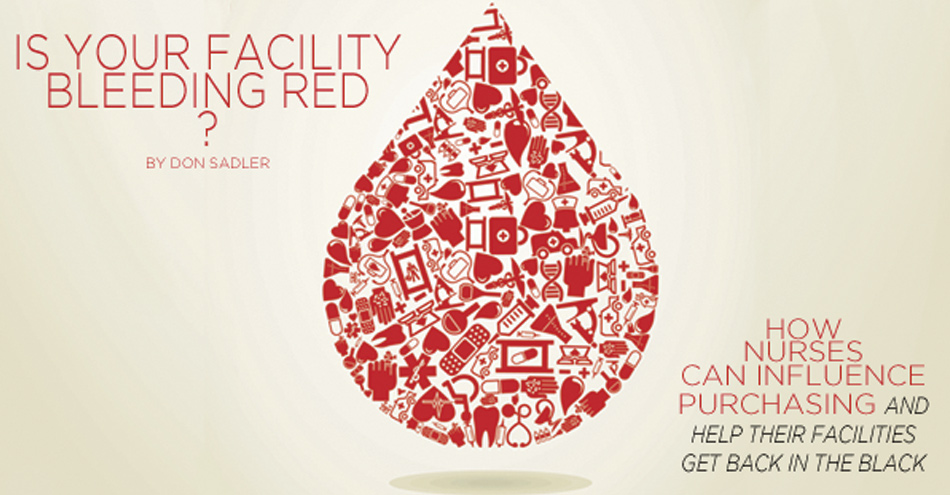Most hospitals have been bracing for cuts to Medicare reimbursement ever since the Affordable Care Act was signed into law three years ago. Now that “Obamacare” has survived a Supreme Court challenge and the 2012 presidential election, these cuts have become a reality—making efficiency a top priority at many hospitals today.
The Affordable Care Act will result in across-the-board Medicare reimbursement cuts of $260 billion over the next 10 years. Those cuts will lower revenue for hospitals. To remain profitable, they’ll need to reduce costs and be more efficient, particularly in the OR, says Ken Perez, a director of health care policy at the health care consulting firm MedeAnalytics. “Given these certain pressures, hospital management will be looking for opportunities to reduce OR costs in particular, since some thirty percent of a hospital’s consumption occurs in the OR.”
A more active nurse role
Perez says there are many things OR nurses can do to increase efficiency at their facilities. One of the most effective steps is to take a more active role in the purchasing process and materials management. “In the current costconscious environment, it’s very important for nurses and materials management professionals to work together. By taking the time to collaborate with materials management, nurses can influence the product selection process and raise awareness about how less-expensive products can end up costing more money if they don’t work well.”
“Nurses should be involved early in the process of evaluating the products, equipment and tools that are going to be implemented,” adds Brian Adcock, a regional vice president with Medline Industries, a manufacturer and distributor of medical and surgical products headquartered in Mundelein, Ill. “They tend to be forced to accept products and solutions after the decision has already been made, but it’s important to get feedback from nurses early on about products and equipment.”
Adcock says he often sees a professional disconnect in hospitals. “Clinicians feel that purchasing is just looking for the lowest-cost products and doesn’t care about patient care. And purchasing doesn’t think nurses know anything about making buying decisions and that, if given free reign, they’d buy every new widget that came along.”
From his perspective as a vendor, Adcock says neither of these perceptions is necessarily true. “Purchasing departments today are very much involved in not only saving money, but also bringing quality products to hospitals. I think they know and understand clinicians’ goals a lot better than they did in the past. On the other hand, I think that most clinicians are cost-conscious— they do have savings in mind and are looking for the best values.”
Adcock believes the main problem is that nurses usually aren’t trained or educated with purchasing in mind. “Nurses are trained clinically, not in how to purchase materials and think about costs. They mainly care about whether tools and equipment work or not. When nurses understand the big picture beyond just their clinical responsibilities, they are better able to encompass cost savings into their work.”
Perez agrees: “Typically, nurses are just users of supplies and equipment, while materials management drives the purchasing process. It’s critical that nurses, nurse managers and CNOs have a seat at the table with purchasing in order to share their preferences and review analytics, including consumption. By sharing information about variations in consumption of supplies and medications with purchasing, nurses can help standardize and optimize operations to make the OR more efficient.”
A unique perspective
As a former nurse, Vanderbilt University Medical Center Chief Supply Chain Officer Teresa Dail, RN, BSN, brings a unique perspective to the issue. “I think it’s important for nurses to be involved in all aspects of health care. I’ve been involved on the physician side, at the patient’s bedside, and now I’m involved in the business side. You can’t sit back as a nurse and expect things to happen if you’re not willing to get involved and be educated in the process.”
Dail admits that many nurses shy away from being involved in purchasing decisions because they’re uncomfortable with the business side of health care. “However, nurses who take the time to work together with purchasing can facilitate change and increase choices.”
Of course, hospitals must always walk the fine line between economics and patient outcomes. “It’s really about both,” says Dail. “It’s about having an organization that’s fiscally responsible, viable and able to hold the margins needed to develop the infrastructures necessary to provide the latest technology to clinicians. I know what I need to take care of my patients, but I also know what it takes to run a large corporation. Many hospitals are operating in the red, so we have to look at it from both sides.”
Dail agrees with Adcock about the importance of nurse training and education when it comes to purchasing and supply chain management. “My goal is to help educate nurses and physicians— to get out there and have a voice and get people involved.” But she also acknowledges that the latest technologies in health care often come with expensive price tags. “So we need to be responsible with what we’re buying. This often takes contracting and some tough negotiation.”
Adcock points out that when clinicians get involved in the purchasing process, the savings can go beyond just the prices of materials and supplies. “There can also be savings in terms of the nurses’ time and a lot of soft costs that materials managers don’t necessarily see. The bottom line is that purchasing and clinicians need each other.”
Of course, most hospitals today use group purchasing organizations (GPOs) for at least some of their purchases in order to negotiate better prices on large volumes of commodity items. But for physician preference items like forceps, for example, GPOs usually allow hospitals to contract on their own, since there are so many different preferences and different ways physicians do things.
Unfortunately, nurses can sometimes get caught in the middle. If a doctor doesn’t have access to a preferred product or supply, it’s usually the nurse, not the purchasing manager, who is going to hear about it.
One solution is for physicians to serve on product evaluation committees. This way, when a doctor complains to a nurse that a specific branded tool isn’t available, the nurse can explain that a committee comprised of other physicians made the purchase decision. “This takes nurses out of the firing line, because the decision wasn’t made by them or by materials management, but by their peers.”
Nurse relationship remains central
While hospital facilities, supplies and equipment are important, Perez stresses the pivotal role of nurses and the importance of the nurse-patient relationship. “Patients perceive the quality of health care they receive primarily based on their interaction with their nurse. For example, 99.7 percent of all medications are administered in hospitals by nurses, per the American Society of Health-System Pharmacists. So in a very tangible way, the nurse is viewed as the person who is providing the patient with something to alleviate pain, cure an illness and sustain life.
“Clearly, what patients think about most of all when it comes to the face of health care and their health care experience is the nurse,” he adds. “If nurses are going to be asked to play a leadership role in evaluating products, technologies and tools to help in the area of patient safety, they can’t be totally dependent on the judgment of materials management or pharmacy—because ultimately, the tools are being used at the bedside by the nurses.”











